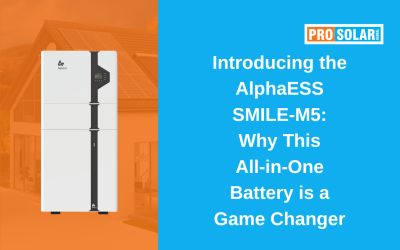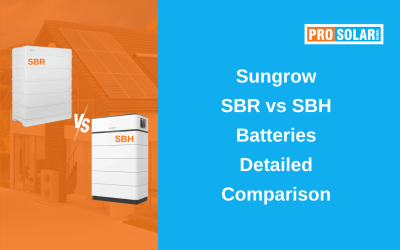Solar inverter technology keeps evolving, and 2025 marks a year of important advances in efficiency, safety, grid compatibility and smart energy integration. At Prosolar Global, we explain what’s new, why it matters and how choosing the right inverter today can save you time, money and hassle tomorrow.
What Is an Inverter—and Why It Matters
A solar inverter converts DC electricity from your panels into AC electricity used in your home or the grid. Its role has grown: today’s inverters also manage exports, batteries and smart features. Australia’s Clean Energy Council (CEC) requires all inverters used under the federal small-scale scheme to be on the approved list for safety, reliability and export eligibility .
Key Improvements in 2025
1. Updated Standards—AS/NZS 4777.2:2020 Amd 2:2024From 23 August 2025, all inverters must comply with AS/NZS 4777.2:2020 Amd 2:2024. These standards cover safety, export control, region‑specific settings, and introduce rules for vehicle‑to‑grid and EV charging equipment (EVSE)—allowing bidirectional power flow (V2H / V2G). Inverters now support EV integration and more flexible system design .
2. Grid‑Forming Inverter TechnologyGrid‑forming inverters can stabilize the grid during disturbances, acting like virtual power plants. In Australia, several large solar‑battery projects are the first to get approval using grid‑forming inverters—supporting network stability during peak load or outages .
3. Higher Voltage Systems (2,000 V DC)Manufacturers are moving from 1,500 V to 2,000 V DC input, enabling longer string connections. That reduces cabling, installation and operation costs—often cutting the balance‑of‑system spend by 10–15 % .
4. Enhanced Efficiency & Transformer‑Less DesignsTop‑tier string inverters now reach 97–98 % efficiency, and transformer‑less topologies (like H5 or HERIC) minimise leakage current and total harmonic distortion while shrinking size and cost .
5. Smarter Features—AI, Monitoring & Cyber‑SecurityAdvanced inverters offer cloud-based monitoring, AI analytics, predictive maintenance and tighter integration with home energy systems. However, reliance on smart features raises new cybersecurity considerations for installations with high solar penetration .
6. Bi‑Directional EV Charger CompatibilityThe updated standard includes EVSE clauses to permit vehicle‑to‑home and vehicle‑to‑grid functionality. This lets EV batteries become part of your home’s energy storage—another step toward self‑sufficient microgrids .
Why These Changes Matter
- Grid‑forming inverters enhance system reliability and support networks with high solar and battery loads.
- Higher voltage inputs reduce hardware costs and increase efficiencies—especially useful on large rooftop or commercial systems.
- New standards ensure safer operation, legal export compliance, and integration with EV and battery loads.
- Smart features deliver greater control, energy insights and predictive performance benefits—provided they’re secure.
- Bi‑directional EV support expands home energy from solar-only to integrated EV storage and grid export.
Example Modern Inverter Use‑Cases
- 6 kW household system with battery – Choose a string inverter compliant with AS/NZS 4777.2 Amd 2, 98 % efficiency, with bidirectional EV support.
- Large rooftop system (20 kW+) – Use a 2,000 V string inverter to reduce BOS spending and ensure grid‑forming for stability during peak solar export.
- EV‑enabled home aiming off‑grid capability – Install a grid-forming inverter capable of V2H and battery‑backup operation, compliant with upcoming EVSE clauses.
Compliance & Installation Notes
- Always verify that your chosen inverter is on the Clean Energy Council approved products list. Non‑listed models cannot qualify for STCs and may be rejected by network providers .
- Some electricity distribution networks—such as Jemena from July 2025—will only accept inverters on their own approved list that meet CEC requirements and remain online via internet connectivity.
Summary Table
| Feature | What’s New in 2025 | Benefit for You |
| AS/NZS 4777.2 Amd 2:2024 | New export, EVSE and controls | Safe, compliant, future‑proof |
| Grid‑Forming Tech | Stabilises grid during outages | More reliable solar‑battery hybrid |
| High‑Voltage (2,000 V DC) | Longer strings, fewer cables | Lower hardware & installation costs |
| H5/HERIC Transformer‑less Topologies | Lower leakage & THD, high efficiency | Smarter, smaller, cheaper |
| Smart AI & remote monitoring | Predictive analytics, energy insight | Better control and maintenance |
| Bi‑Direction EV compatibility | V2H / V2G enabled by standard | Expanded battery and EV integration |
Conclusion
Pacific-wide solar adoption means inverter technology must evolve—and 2025 brings standards, features and design enhancements to do just that. From safety standards to grid‑forming capabilities, higher voltages, efficiency gains and EV integration, these improvements raise performance, flexibility and reliability across commercial and residential solar systems.
At Prosolar Global, our experts help you identify compliant, feature-rich inverters tailored to your system size, future plans, and export objectives.
Talk to our expert by calling them on 1300 181 191 to ensure your solar inverter is up to today’s standards—and tomorrow’s needs.




